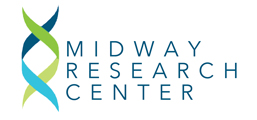C Difficile
Nearly half a million Americans suffered from Clostridium difficile infections in a single year
Clostridium difficile (C. difficile) caused almost half a million infections among patients in the United States in a single year, according to a study released today by the Centers for Disease Control and Prevention (CDC). Approximately 29,000 patients died within 30 days of the initial diagnosis of C. difficile. Of those, about 15,000 deaths were estimated to be directly attributable to C. difficileinfections, making C. difficile a very important cause of infectious disease death in the United States. More than 80 percent of the deaths associated with C. difficile occurred among Americans aged 65 years or older. C. difficile causes an inflammation of the colon and deadly diarrhea. Previous studies indicate that C. difficile has become the most common microbial cause of healthcare-associated infections in U.S. hospitals and costs up to $4.8 billion each year in excess health care costs for acute care facilities alone. The new study found that 1 out of every 5 patients with a healthcare-associated C. difficile infection experienced a recurrence of the infection and 1 out of every 11 patients aged 65 or older with a healthcare-associated C. difficile infection died within 30 days of diagnosis. “C. difficile infections cause immense suffering and death for thousands of Americans [...]
Keep Food and Water Safe After a Disaster or Emergency
After A Disaster: Food: Throw away food that may have come in contact with flood or storm water; perishable foods that have not been refrigerated properly due to power outages; and those with an unusual odor, color, or texture. Unsafe food can make you sick even if it looks, smells, and tastes normal. When in doubt, throw it out. Water: Do not use water you suspect or have been told is contaminated to wash dishes, brush your teeth, wash and prepare food, wash your hands, make ice, or make baby formula. Safe water for drinking, cooking, and personal hygiene includes bottled, boiled, or treated water. Your state, local, or tribal health department can make specific recommendations for boiling or treating water in your area. Food Identify and throw away food that may not be safe to eat Do the following with food and containers that may have had contact with flood or storm water. Throw away the following foods: Food that has an unusual odor, color, or texture. When in doubt, throw it out. Perishable foods (including meat, poultry, fish, eggs and leftovers) in your refrigerator when the [...]



